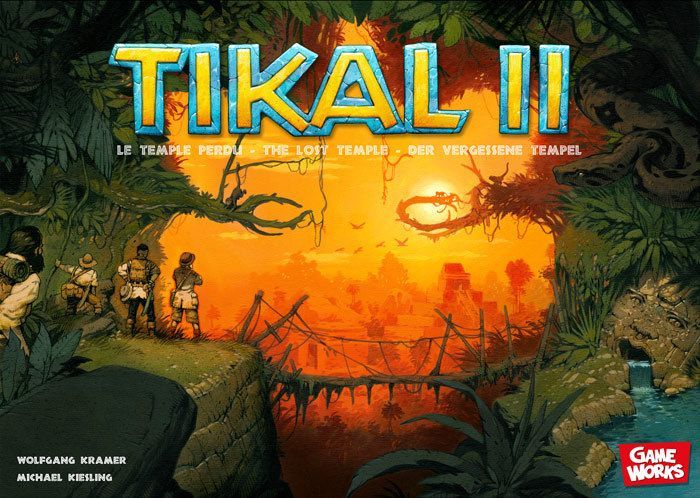Tikal II: The Lost Temple (2010) Board Game
Tikal II: The Lost Temple is a board game released in 2010, designed by Michael Kiesling and Wolfgang Kramer. It is a sequel to the popular game Tikal, which was first released in in 2010. In this game, players take on the role of explorers, searching for lost temples in the jungles of Central America. With beautiful artwork by Vincent Dutrait, Tikal II: The Lost Temple offers an immersive and challenging gaming experience.
Game Components of Tikal II: The Lost Temple
How To Setup Tikal II: The Lost Temple
To set up the game, players first lay out the game board, which includes a river and various temple areas. Each player chooses a token and places their canoe on the river. The exploration cards and treasure tokens are shuffled and placed within reach of all players. Each player is given a set of action points. The rulebook provides detailed instructions for the initial setup and subsequent gameplay phases.
Gameplay Mechanics and Game Objective
Player Experience
Players in Tikal II: The Lost Temple are immersed in an adventurous journey of exploration and strategic planning. The game requires a balance between moving through the river to reach new areas and managing the limited action points to maximize treasure collection. The gameplay is engaging, with a mix of luck from the exploration cards and strategic decision-making.
Pros
Cons
Personal Thoughts on Tikal II: The Lost Temple
Tikal II: The Lost Temple is ideal for fans of adventure and exploration games who enjoy strategic planning and depth. It is best suited for experienced board game enthusiasts due to its complexity and playtime. However, for those who appreciate a challenge and are willing to invest the time, this game offers a rich and rewarding experience.
We are supported by our audience. When you purchase through links on our site, we may earn an affiliate commission, at no extra cost for you. Learn more.

